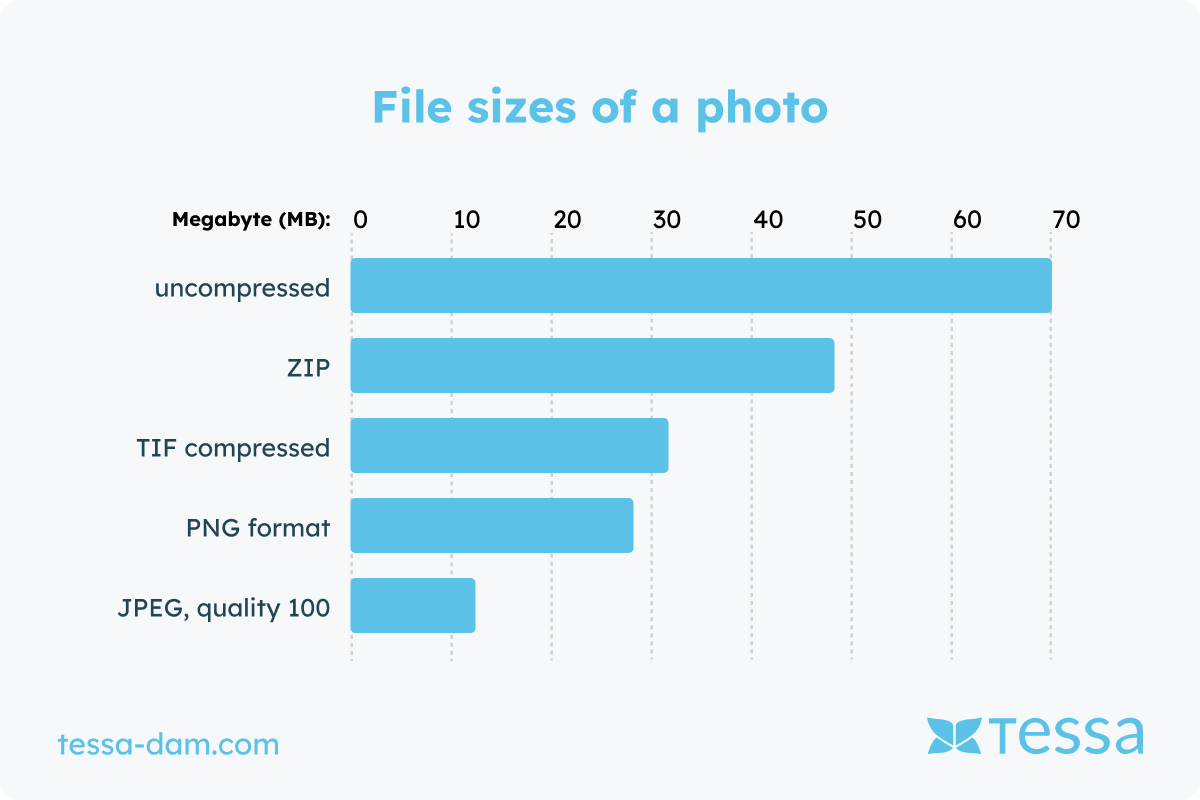Introduction
JPEG (Joint Photographic Experts Group) is a widely used image compression format that provides high image quality at low file sizes. Since its introduction, it has become the standard for storing and transmitting digital images. This article provides an overview of the technology behind JPEG, its advantages and disadvantages, and its applications.
Technical Basics
JPEG is based on lossy compression of images, where irrelevant information is removed to reduce file size while maintaining acceptable image quality. This is achieved through various techniques such as discretization, transformation, and quantization. Discretization involves dividing the image pixels into blocks, which are then subjected to a transformation (typically the Discrete Cosine Transform, DCT) to reduce spatial redundancy. The DCT coefficient matrix is then quantized, further reducing the data size.
Advantages and Disadvantages of JPEG
The main advantage of JPEG is its ability to compress high-resolution images into relatively small files, making it ideal for storing and transmitting images over the Internet. It is also widely compatible with most image editing and display software. However, lossy compression can lead to artifacts, especially in areas with fine details or sharp contrasts, at high compression rates.
Future Developments
Although JPEG is already widely used, efforts continue to improve its efficiency. New technologies like JPEG 2000 offer improved compression algorithms and support additional features such as lossless compression and scalability. Furthermore, developments in artificial intelligence and machine learning could bring about new approaches to image compression and enhancement.
Efficient Management of Large Amounts of JPEG Images through Digital Asset Management (DAM)
Through Digital Asset Management (DAM), companies can efficiently organize, catalog, and manage large amounts of JPEG images. With features for metadata management and keyword search, DAM enables quick navigation through extensive image collections. The integrated image editing function allows adjustments directly within the platform, while security measures control access to sensitive images and versioning functions track changes. DAM optimizes the workflow for managing many JPEG images in enterprises. Learn more about how TESSA-DAM can support your image management needs.
Conclusion
A Fundamental Component of Digital Image Processing and Transmission
JPEG remains a fundamental component of digital image processing and transmission. Its ability to provide a balanced trade-off between image quality and file size has made it an indispensable tool in a variety of applications. While new technologies and standards emerge, JPEG continues to be a cornerstone of image compression technology.





